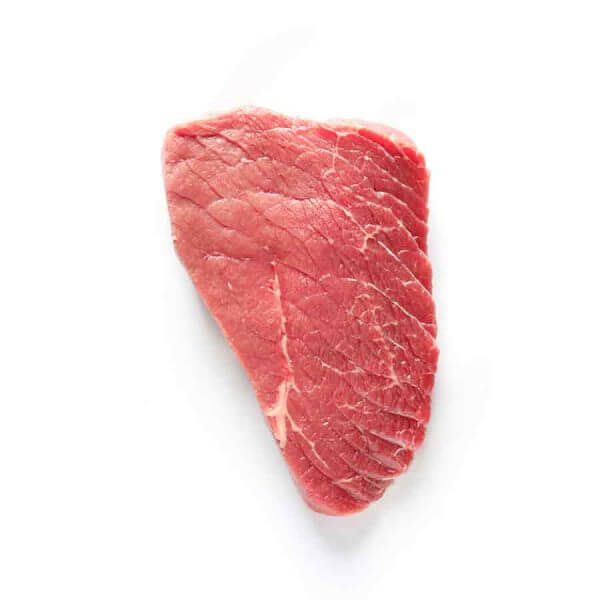Treating Cushing’s Disease in Dogs — Diets, Natural Remedies, and Medicines
4/28/19

Cushing’s disease, which affects both humans and dogs, is surprisingly much more common in canines — especially older ones.
With a wide range of symptoms, Cushing’s disease can be serious if left untreated. In this article, experts show us how to recognize possible Cushing’s symptoms and how your vet can diagnose the disease. We also cover various treatments — from conventional medicine to surgery, from natural treatments to diet.
What Is Cushing’s Disease in Dogs?
The most-common cause of Cushing’s disease is a tumor, which produces an over-production of the stress hormone cortisol. This tumor can occur on either the tiny pituitary gland at the base of the brain or on one of the adrenal glands near the kidneys. This excess cortisol production can cause a range of symptoms and health problems. Cushing’s disease is also known as hyperadrenocorticism, or hypercortisolism.
What Are the Types of Cushing’s?
There are four types of Cushing’s in dogs, with two of them being the most common:
- Eighty to ninety percent of Cushing’s disease in dogs is what’s called pituitary-dependent Cushing’s, or PDC, according to the Food and Drug Administration (FDA). This type of Cushing’s is caused by a benign tumor on the pea-sized pituitary gland at the base of the brain, which then causes excess cortisol production.
- Adrenal-dependent Cushing’s, or ADC, is caused by a cancerous or non-cancerous tumor on one of the adrenal glands near the kidney, which also causes excess cortisol production. According to the FDA, this type of Cushing’s is responsible for 15 to 20 percent of cases in dogs.
- Latrogenic Cushing’s syndrome, which is rare, is caused by excessive steroid treatment for conditions such as skin allergies.
- Meal- or food-induced Cushing’s can happen in very rare cases. This type is caused when a hormone produced by the stomach during meals releases an abnormal amount of cortisol.
How Common Is Cushing’s Disease in Dogs?
Cushing’s disease is much more common in dogs than humans. According to an article published in Hormone Research, It’s estimated that one to two per 1,000 dogs are diagnosed with Cushing’s in the U.S. each year. That’s about 100,000 dogs per year.
What is the Difference Between Cushing’s Disease and Cushing’s Syndrome?
In humans, excess cortisol production caused by a pituitary gland tumor is called Cushing’s disease. Cushing’s syndrome refers to the symptoms and problems stemming from excess cortisol production, regardless of the cause.
In dogs, Cushing’s disease and Cushing’s syndrome are used interchangeably for the same disease.
Symptoms of Cushing’s Disease in Dogs
The most common symptoms of Cushing’s disease are called “the five Ps.”
- Polydipsia, or increased drinking
- Polyuria, or increased urination
- Polyphagia, or increased appetite
- Panting (excessive)
- Pot-bellied appearance
Jeff Grognet, a veterinarian in Qualicom Beach, British Columbia, reports that dogs with Cushing’s most often display three symptoms: skin problems, excessive drinking and excessive urination.
“These dogs are drinking a tremendous amount of water, then urinating, correspondingly, a tremendous amount,” he says. Skin problems can also indicate Cushing’s disease. The condition can cause a dog’s skin to thin, which can then become infected, Grognet explains.
Eventually, a dog with Cushing’s can develop something called calcinosis cutis. “This condition is an accumulation of calcium in the superficial skin layer, which is very irritating, causes open sores and unfortunately is not treatable,” he adds.
Other Cushing’s symptoms include:
- Hair loss
- Scaly white patches on the skin, often associated with calcinosis cutis
- Skin rashes
- Darkening of the skin, sometimes called hyperpigmentation
- Appearance of blackheads or lesions on the skin
- Unidentifiable lumps
- Skin thinning
- Skin infections
- Other infections, including ear and urinary tract
- Bruising easily
- Muscle weakness
- Bony appearance in the head
- Sweating
- Weight loss in spite of increased appetite
- High blood pressure
- Erratic blood glucose levels
- Depressed immune system
- Heat intolerance
- Enlarged liver
- Liver disease
- Enlarged adrenal glands
- Mood changes
- Neurological abnormalities (circling, seizures, behavioral changes)
- Abnormal sleeping patterns
- Decreased activity
- Signs of change in the dog’s reproductive system
Other Conditions Sometimes Misdiagnosed as Cushing’s
Sometimes, dogs are misdiagnosed as having Cushing’s disease when they actually have thyroid disease, or hypothyroidism. That happens when your dog’s body produces too little of the thyroid hormone. Some thyroid disease symptoms are similar to symptoms for Cushing’s, including patches of hair loss, weight gain, lethargy, ear infections and dry flaky skin.
Ways That Owners and Vets Can Contribute to a Dog’s Cushing’s Disease
As mentioned earlier, a rarer form of Cushing’s happens when veterinarians prescribe excessive steroid treatments to battle things like skin allergies. Some also believe a poor-quality commercial food diet — including diets high in fats and low in proteins — can also contribute to Cushing’s in dogs.
Long-term Problems and Potential Effects from Cushing’s Disease
Dogs with Cushing’s disease can develop other diseases and problems because of how Cushing’s affects their systems. Those include:
- Diabetes
- Pancreatitis
- Heart disease, including congestive heart failure
- Seizures
- Kidney disease or failure
- Bladder stones composed of calcium oxalate
- Skin problems
- High blood pressure
Dogs at Higher Risk of Developing Cushing’s Disease
In most cases, dogs who develop Cushing’s disease are older, often 9 to 12 years old. But younger dogs are also susceptible, especially the rare meal-induced form of the disease. Cushing’s also happens more often in certain breeds, including:
- Poodles
- German Shepherds
- Terriers
- Golden Retrievers
- Labradors
- Dachshunds
- Boxers
- Beagles
Diagnosing Cushing’s in Dogs
Cushing’s can be difficult to diagnose, and often requires expensive tests for a more certain diagnosis.
Your vet will first likely run some tests on your dog’s blood and urine, looking for signs that could point to Cushing’s. If your dog’s urine is “dilute,” meaning it has a high water content because of excessive water intake, that could point to the need for further tests. A high amount of a liver enzyme called alkaline phosphatase in the blood also indicates that further testing for Cushing’s might be needed.
Further tests might include:
- An ACTH stimulation test:
- Adrenocorticotrophic, or ACTH, hormone is naturally produced by the pituitary gland, and signals to the adrenal glands when and how much cortisol to produce. In this test, your vet will check the cortisol levels in your dog’s blood, then give him an injection of a synthetic version of ACTH. Your dog’s cortisol levels will then be checked again a couple of hours later. A dog with Cushing’s disease will experience a significant increase in cortisol levels after the ACTH injection, because a dog with Cushing’s will have adrenal glands that have been over-stimulated by naturally occurring ACTH and are therefore sensitive to the additional synthetic ACTH. But the test cannot distinguish between pituitary-dependent and adrenal-depending ACTH.
- Low-dose dexamethasone suppression (LDDS) test:
- This test is considered especially accurate for diagnosing Cushing’s but it requires an eight-hour hospital stay. A vet will measure your dog’s cortisol level, and will then administer a small dose of dexamethasone, a corticosteroid. In a dog without Cushing’s, cortisol levels will drop after eight hours. While this test is a good indicator to detect the disease, it can sometimes produce false positives.
- High-dose dexamethasone suppression test:
- This test is more precise than the LDDS in determining which type of Cushing’s your dog has — pituitary-dependent or adrenal-dependent. It’s conducted in a similar way to the LDDS test, except it uses a higher dose of dexamethsone.
- Urine Cortisol: Creatinine Ratio:
- This test determines whether your dog has unusually high levels of cortisol in his system. A negative result — showing low or normal amount of cortisol — rules out Cushing’s. However, while a positive result could indicate Cushing’s, it doesn’t necessarily confirm the disease, as there could be other reasons for your dog’s high cortisol levels.
- Ultrasound, or x-ray:
- Dogs with Cushing’s disease may have a larger than normal liver or adrenal glands. X-rays or an ultrasound may be able to detect that. Either test also might show calcium deposits in the skin.
Overall Advice About Treating a Dog with Cushing’s Disease

There are a number of medical and other treatments that can help treat your dog’s Cushing’s disease and symptoms. In some cases — especially if your dog has mild pituitary-dependent Cushing’s — immediate treatment may not be necessary, says Dr. Jennifer Coates, a veterinarian in Fort Collins, Colo. and advisory board member of Pet Life Today, an online informational resource for pet owners.
Dogs with mild pituitary-dependent Cushing’s should be closely monitored for a worsening of their condition, says Coates. “Some veterinarians recommend a natural, anti-inflammatory diet and herbal therapy for treatment,” she says.
A few overall recommendations as you consider or pursue treatments for your dog’s Cushing’s:
- Talk to your vet before you significantly change your dog’s diet.
- Notify your vet before you start your dog on any herbal or natural supplements.
- If you choose not to treat your dog immediately, closely monitor him or her for any worsening symptoms
Conventional Medical Treatments for Cushing’s in Dogs
Possible conventional treatments for Cushing’s disease include surgery, radiation and medicine.
Surgery:
Surgery can be used to remove a malignant adrenal tumor that is causing Cushing’s. But it’s rarely used for pituitary tumors, because they are very small and difficult to remove.
Radiation:
Radiation can be effective in order to shrink the size of a pituitary tumor, which can then decrease your dog’s symptoms.
Medicine:
Oral medicines are by far the most common treatment for Cushing’s. The two most common medicines, which will need to be administered for the rest of your dog’s life, are:
- Trilostane (brand name is Vetoryl):
This drug, approved in 2008 by the Food and Drug Administration (FDA) for use in animals, decreases the production of cortisol by the adrenal gland, but does not affect the pituitary or adrenal tumor. It significantly reduces symptoms in four out of five dogs, but is a relatively expensive treatment.
- Mitotane (brand name Lysodren)
This drug is a human chemotherapy drug and can be used to treat Cushing’s in dogs. It has a similar effect as trilostane, causing the adrenal gland to produce less cortisol. It has been used for Cushing’s much longer than trilostane and is less expensive, but it often has more side effects than trilostane.
It’s important to remember, though, that both trilostane and mitotane — while effective for lowering cortisol levels — are treatments, not cures. “What these medicines do is destroy part of the adrenal cortex that is secreting the cortisol, and that lowers the cortisol being produced,” says Dr. Grognet. “And that’s what creates all the symptoms in Cushing’s disease. So it’s not a treatment in the sense that it cures it — it really has nothing to do with the tumor at all. What it does is it prevents the cortisol release, which cause the secondary symptoms that are characteristic of Cushing’s.”
A third drug — selegiline hydrochloride (brand name Anipryl) — is recommended much less often than trilostane or mitotane. It works by preventing dopamine breakdown in the brain, which in turn affects cortisol production. But it helps only a small portion of dogs with Cushing’s.
Possible Side Effects of Mitotane and Trilostane
Side effects from mitotane and trilostane can be similar.
The most common side effects from mitotane include:
- Weakness
- Loss of appetite
- Vomiting
- Diarrhea
- Decreased coordination
- Lethargy
The most common side effects from trilostane include:
- Weakness
- Reduced appetite
- Vomiting
- Diarrhea
- Lethargy
Dogs treated for Cushing’s can also develop the exact opposite problem: when their body produces too little cortisol. This condition is called Addison’s disease, and symptoms are similar to other mitotane and trilostane side effects. That’s why it’s important to monitor your dog’s health, so you can tell your veterinarian of any consistent issues.
What Are Natural Treatments for Dogs with Cushing’s?
Many vets and owners have found natural treatments that can help with Cushing’s symptoms. Most of the natural treatments are herbal or dietary supplements, including:
- Fish oil
- Dandelion
- Magnolia bark
- Si Miao San
- Ginkgo biloba
- Melatonin
- Nettle
- Rosehips
- Clover
- Burdock
- Milk thistle
- Homeopathic pituitary extract
- Homeopathic formic acid
- Kelp
- Clover
- Garlic
- Apple cider vinegar
- Phosphatidylserine supplements
- Adrenal Harmony Gold for Dog Cushing’s
For dogs with food-induced Cushing’s, some experts recommend adrenal enzyme blockers, taken a few hours before meals.
Some also recommend acupuncture, which can help regulate the endocrine system and thus help Cushing’s symptoms.
Overall Dietary Goals for Dogs with Cushing’s Disease
Certain dietary changes can also help reduce your dog’s Cushing’s symptoms. They include:
- Foods high in protein
- Foods low in fat
- Foods low in fiber
- Foods with low purine levels (avoid organ meats)
- Foods low in carbohydrates
- Foods low in calcium
- Foods rich in lignans (including whole grains, nuts and seeds, legumes, fruits, and vegetables)
Specific Foods that Are Good for Dogs with Cushing’s
-

carrots -peas -green beans -potatoes -broccoli -celery -lettuce -bok choy -spinach -brussels sprouts -mushrooms -green peas -zucchini -

beef -chicken without skin or bones -fish (except sardines) -shellfish -salmon -kidneys -liver -eggs -

apples -berries -bananas -pumpkins -watermelon -avoid feeding seeds and rinds

The Pros and Cons of a Raw Diet for Dogs with Cushing’s
Many believe that feeding a dog a raw diet can help with a number of health problems, including Cushing’s disease symptoms. Since your dog’s natural ancestral diet before domestication included raw protein, he already has the enzymes to break down the bacteria, and you may find general health improvements.
Advantages of a raw diet include:
- Increased energy levels.
- Improved skin and coat.
- Stronger teeth and bones.
- Improved muscle strength.
- Better digestion.
Concerns of a raw diet include:
- Additional supplementation may be necessary, in order to ensure that your dog’s diet is nutritionally balanced over the long term — particularly calcium and phosphorous.
- Dogs can get sick from bacteria in raw meat if their body doesn’t properly protect against it (in some cases, a dog may not build up the immunity).
- Proper cleanup after feeding your dog is required to avoid contamination.
While a raw diet may not significantly affect Cushing’s symptoms per se, it can help health overall, says Dr. Grognet, who feeds his own dogs and cats raw diets. In particular, high protein in a raw diet might be especially helpful for dogs in danger of losing muscle mass because of the disease. “It makes sense that having them on a higher protein diet would at least make an inroad in trying to maintain the muscle mass rather than having it waste away because of Cushing’s disease,” he says.
Additional Foods Your Dog Should Eat and Actions to Take If Your Dog Is on a Raw Diet
If you have your dog on a raw diet, you should follow certain recommendations to help him maintain his health, such as:
- Introduce a raw diet gradually, so his body has a chance to build up the needed enzymes to destroy bacteria in raw meat.
- Include raw vegetables, eggs, and small amounts of fruit and starches.
- Stick to only high-quality meat and proteins.
- Feed your dog small amounts of dairy products, including possibly a probiotic yogurt with active cultures.
Overall Prognosis of Dogs with Cushing’s
Dogs who are treated for Cushing’s can have a high quality of life for a few years — sometimes more — beyond their diagnosis. Here’s what you need to know:
- According to the American Kennel Club (AKC), the average survival time after diagnosis is two years, with about 10 percent living beyond four years. However, keep in mind that since most dogs diagnosed with Cushing’s are older dogs, they may often have simply died of other natural causes within two to four years after the diagnosis.
- For cases of a malignant adrenal tumor causing Cushing’s disease, prognosis without surgery is poor.
- If your dog has successful surgery for his adrenal tumor, the prognosis is generally good if the tumor is benign, and poor if the tumor is cancerous.
Get Raw Meals for Dogs with Cushing’s Disease Delivered to Your Home
If your dog has been diagnosed with Cushing’s Disease and are interested in feeding them a raw food diet, consider and option that’s conveniently delivered right to your home. At Darwin’s Pet Products, our number one goal is to help keep your pets healthy and active for as long as possible. To help accomplish this goal, we provide a library of articles in the hope of providing consumers with useful information to help their pets.
And, primarily, we produce affordable, high-quality raw dog and cat meals which we ship directly to consumers so they are as fresh and convenient as possible. Our meals are high in protein, gluten-free, wheat free, and are created to provide complete and balanced nutrition. We encourage you to learn more about our meals for dogs and meals for cats.
Or, if you think you might want a trial of Darwin’s (at an introductory price), we would love to send you our meals and hear how much your dog or cat loves them.



